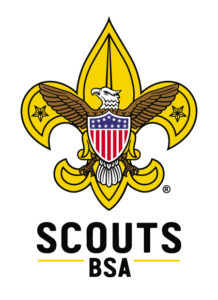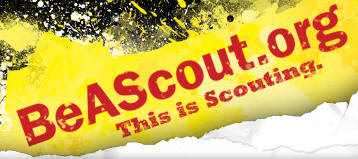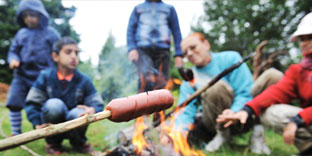
Scouting is a value-based program with its own code of conduct. The Scout Oath and Law help instill the values of good conduct and honesty. Youth who spends one year in a Scout troop will learn skills that will serve them for life. They will learn basic outdoor skills, first aid, citizenship training, leadership skills, self-reliance, and how to get along with others. Scouting will prepare them to live a more productive and fulfilling life.
Methods of Scouting
The methods are designed to accomplish the aims. Thus it is important that you know and use the methods of Scouts BSA. Other methods are good, but they may bring different results – results quite different than we are seeking.
Ideals – The ideals of Scouting are spelled out in the Scout Oath, Law motto, and slogan. The Scout measures them self against these ideals and continually tries to improve. The goals are high, and as they reach for them they have some control over what they become. “Show Scout spirit,” a requirement for rank advancement, means living up to these ideals.
Patrols – The patrol method gives Scouts an experience on group living and participating citizenship. It places a certain amount of responsibility on young shoulders and teaches Scouts how to accept it. The patrol method allows Scouts to act in small groups where they can easily relate to each other. These small groups determine troop activities through their elected representatives.
Outdoors – Scouting is designed to take place outdoors. It is in the outdoors that Scouts share responsibilities and learn to live with each other. It is here that skills and activities practiced at troop meetings come alive with purpose.
Being close to nature helps Scouts gain an appreciation for God’s handiwork and humankind’s place in it. The outdoors is the laboratory for Scouts to learn ecology and practice conservation of nature’s resources.
Advancement – Scouting provides a series of surmountable obstacles and steps to overcome them through the advancement method. The Scout plans his advancement and, by participating in the troop program, progresses as they overcome each challenge. The Scout is rewarded for each advancement, which helps them gain self-confidence.
The steps in the advancement system help them grow in self-reliance and the ability to help others.
Adult Association – Scouts learn from the example set by their adult leaders. Troop leadership may be male or female, and association with adults of high character is encouraged at this stage of a young person’s development.
Personal Growth – As Scouts plan their activities and progress toward their goals, they experience personal growth. The Good Turn concept is a major part of the personal growth method of Scouting. Youth grow as they participate in community service projects and do Good Turns for others. There probably is device so successful in developing a basis for personal growth as the daily Good Turn.
The religious emblems program is also a large part of the personal growth method. Frequent conferences with his Scoutmaster help each Scout to determine his growth toward Scouting’s aims.
Leadership Development – Scouts BSA encourages youth to learn and practice leadership skills. Every Scout has the opportunity to participate in both shared and total leadership situations. Understanding the concepts of leadership helps them accept the leadership roles of others and guides them toward the citizenship aim of Scouting.
Uniform – The uniform makes the Scout troop visible as a force for good and creates a positive youth image in the community. Scouts BSA is an action program, and wearing the uniform is an action that shows each Scout’s commitment to the aims and purposes of Scouting. The uniform gives the Scout identity in a world brotherhood of youth who believe in the same ideals.
The uniform is practical attire for Scout activities, and provides a way for Scouts to wear the badge that show what they have accomplished.
Learn More About The Scout Program Click Below



 Join Today!
Join Today!
 Events Calendar
Events Calendar
 Resource Center
Resource Center
 News Room
News Room
 Things To Do
Things To Do
 Give Now
Give Now